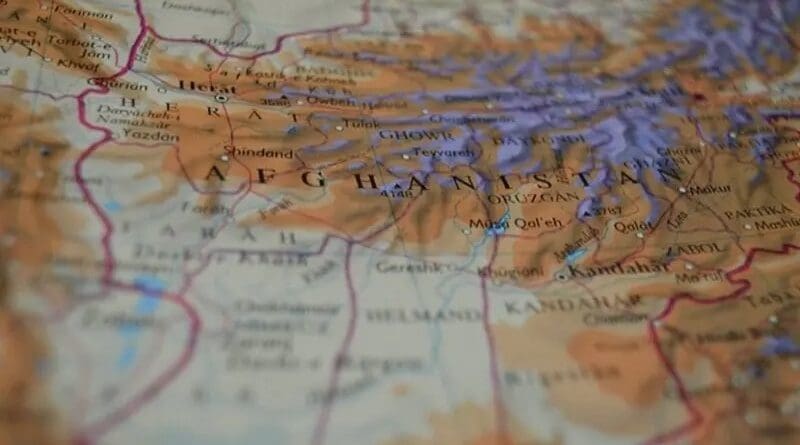Grading Counterinsurgency And The Afghanistan Exit Strategy
By IPCS
By Lydia Walker
Since he took office, US President Barack Obama has tripled the number of American troops in Afghanistan. He turned over command to Generals Stanley McChrystal and David Petraeus in succession, generals who advocate a counterinsurgency (COIN) strategy designed to literally counter insurgency which (in the words of the military field manual written under the aegis of Gen. Petraeus) is the “organized, protracted politico-military struggle designed to weaken the control and legitimacy of an established government, occupying power, or other political authority.” The past two years of COIN operations in Afghanistan have seen a vast increase in NATO/ISAF troops, but no corresponding decrease in violence. This is to be expected, since COIN is a long-term strategy. However, the US and NATO are not willing to co-sign an open-ended military commitment to Afghanistan, nor does the Afghan government desire such a commitment. Therefore, the question of an exit strategy for Afghanistan no longer has a yes or no answer. Rather, it raises questions of how and when.
There are two main camps in the US debate over the Afghanistan exit strategy, grouped around a “Plan A” and a “Plan B.” Plan A is the strategy of counterinsurgency with the end goal of a sufficiently stable Afghan state. Plan B, often attributed to US Vice President Joseph Biden, finds Plan A infeasible and seeks to downgrade goals and operations to controlling specific regions and launch counterterrorist operations from these areas. This shorthand of “Plan A” and “Plan B” can eradicate the differences and changes over time within each camp.
Plan A: The transition in command from McChrystal to Petraeus signaled both a change in personal leadership style and an unspoken change in objectives. Obama did not merely remove a general whose staff mouthed off to the press; he got rid of a general who was carrying out a campaign that ignored the prospect of withdrawal beginning in 2011. Obama replaced McChrystal with a general who, though closely identified with COIN, has a past record of pragmatism and political finesse. The shift from McChrystal to Petraeus also converts Plan A to a Plan A-. It tailors an expansive COIN strategy to suit the physical features of Afghanistan and the political realities within the US and its NATO partners.
Plan B has assumed a form beyond murmurings attached to Biden’s name. In September 2010, the Afghanistan Study Group (ASG) released a report signed by a large number of prominent Washington DC insiders and US grand strategists, which outlined how the US should “pursue more modest goals that are both consistent with America’s true interests and [are] far more likely to succeed.” Unfortunately, the ASG Report has some critical flaws. It does not explore the consequences of its recommendations to reduce the US/NATO footprint in Afghanistan through counterterrorist operations and drone attacks. Drone attacks have the side effect of radicalizing the local population. The success of counterterrorist operations is connected to the quality of intelligence received. The quality of intelligence diminishes when the military presence decreases, which would occur if the US draws down its forces by 80% as recommended in the ASG Report. Steve Clemons, the lead writer of the ASG Report, responds to these criticisms by arguing that the ASG Report is a tool for political leverage against the proponents of Plan A. However, while the ASG Report censures Plan A, it does not provide a compelling rationale for Plan B.
So what could be a viable Plan B? At a talk delivered at the Institute of Peace and Conflict Studies, David Cortright, Director of Policy Studies at the University of Notre Dame’s Kroc Institute for Peace Studies, laid out a plan of action with five components: First, a political agreement between Afghan President Karzai and the Taliban which recognizes Taliban control over local areas that they control already and reaffirms the Afghan constitution. Second, an agreement with verifiable military cooperation between the Pakistani Army and the Taliban, to suppress terrorist operations in the region. Third, a social compact between NATO partners and the Afghan government to achieve economic development and protect human rights. Fourth, a diplomatic compact between neighbouring states with strategic interests in a stable Afghanistan. Fifth, the creation of an interim peacekeeping force in Afghanistan; the Taliban has suggested that they would accept a Muslim-led security force, and Cortright believes this idea could be further explored.
Cortright’s agenda may be overly optimistic and idealistic. However, he has crafted an alternative to Plan A. Many aspects of his Plan B+ may seem naïve and out of reach. Yet excessive pragmatism can prevent innovative thinking. In Afghanistan, the same old ideas have not provided a solution – reaching for the moon may be necessary to exit Afghanistan. {jcomments on}
Lydia Walker, Research Intern, IPCS, may be reached at [email protected]

